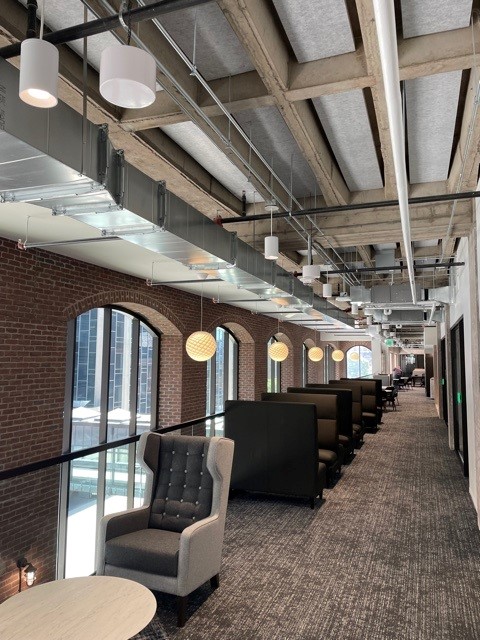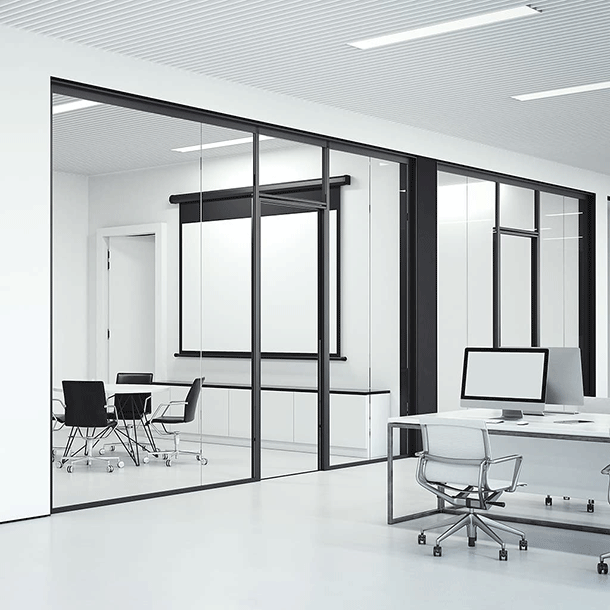It's all based on the notion of sound emergence. The emergence of a sound source is the difference in sound level between that sound source and the background noise. For example, if we have a sound source at 40 dB and a background noise at 30 dB, there will be an emergence of 40-30 = 10 dB.
The higher the emergence, the more perceptible a sound source will be, whether it's a pleasant source or an annoyance.
Discomfort can therefore be masked with a background sound, by reducing emergence.
A very common example is the difference between the sound environment in the countryside and that at the beach, by the sea. In the countryside, background noise is very low, which translates into higher emergence of all sounds. Pleasant sounds, such as birdsong, the sound of wind in the trees, etc., are therefore more easily perceived; but so are annoyances, such as road noise or the neighbor's ventilation.
At the beach, on the other hand, the sound of the waves generates a pleasant sound ambiance that reduces the emergence of discussions and activities around us.

How to reduce emergence
In practical terms, emergence can be reduced in two ways:
- Reduce the noise level at the source, either by working directly at the source, or on its propagation path (for example, acoustic screens can be placed along roads to reduce the noise impact on the propagation path).
- Controlling the background sound... we're going to beat noise with a controlled sound environment.
Treatment of the source noise level is sometimes limited, whether for budgetary, aesthetic or feasibility reasons. To further reduce emergence, we prefer to work on both the source level and the background noise simultaneously.
This is why in some cities, work is being done to reduce car noise, by reducing the speed limit, installing traffic lights and speed bumps, etc.; and in parks, to provide greater comfort, fountains are installed to control the sound environment and reduce emergence.
The art of controlling background noise!
We're talking about overcoming noise with controlled background sound, not overcoming noise with noise. To achieve this, we need to ensure that the generated sound environment does not become an annoyance. There are two essential ingredients to consider:
- Use a pleasant, neutral type of sound.
- Use a low-volume sound that harmonizes with our environment.
As far as the type of sound is concerned, we prefer sounds that are neutral, and pleasant and that cover all frequencies simultaneously so that emergence is reduced at all frequencies.
As for volume, this will depend on a number of aspects, such as:
- What was the background noise before controlling the sound environment (to avoid a drastic change)?
- In which environment, or even which part of the world, are we located?
Generally speaking, if the sound environment is being altered, a gradual change is preferable, to give people time to get used to the new sound environment.
Also, if the background noise is low before implementing a sound ambiance control, the target volume of our fountain will have to be revised downwards to ensure good comfort.

Principles that apply to humans in both environmental (outdoor) contexts and indoor spaces.
All the concepts discussed in this article also apply to office spaces, hospitals, customer areas, etc. The nuisance is no longer road noise or construction work, but speech (from our colleagues next to us or customers in the lobby area) or even patients in an adjacent hospital room.
Sometimes, we don't just focus on the "nuisance" aspect of speech, but we also aim to make it incomprehensible: this is referred to as speech privacy.
In any case, nuisances and confidential conversations can be masked by controlled sound environments, similar to how a fountain masks noise in a park.
At Soft dB, we have included in our sound masking system all the features to ensure an optimal controlled sound environment:
- An engineered sound (covering all speech frequencies), neutral and pleasant, that our brain eventually filters out completely over time, making it virtually indistinguishable – a sound similar to that of a waterfall or fountain.
- A calibrated volume to ensure comfort in all spaces. Watch video
- The ability to offer a gradual increase in volume after installation to ensure a smooth and pleasant transition.
- A volume that adapts to office activities, with the patented adaptive system.




